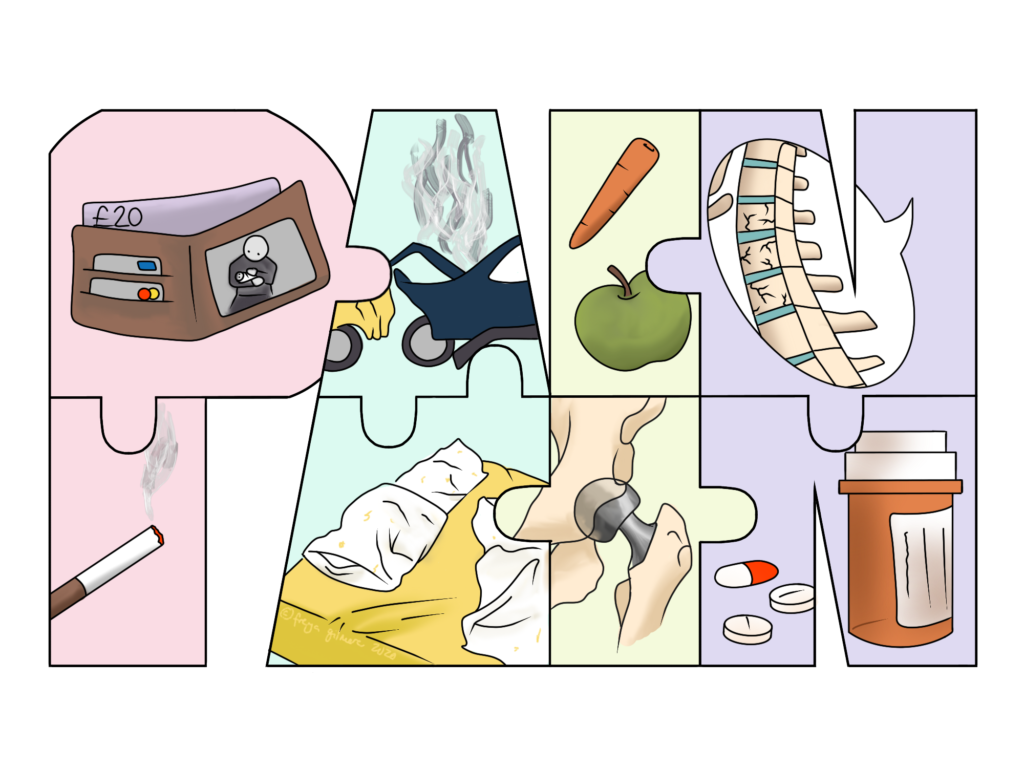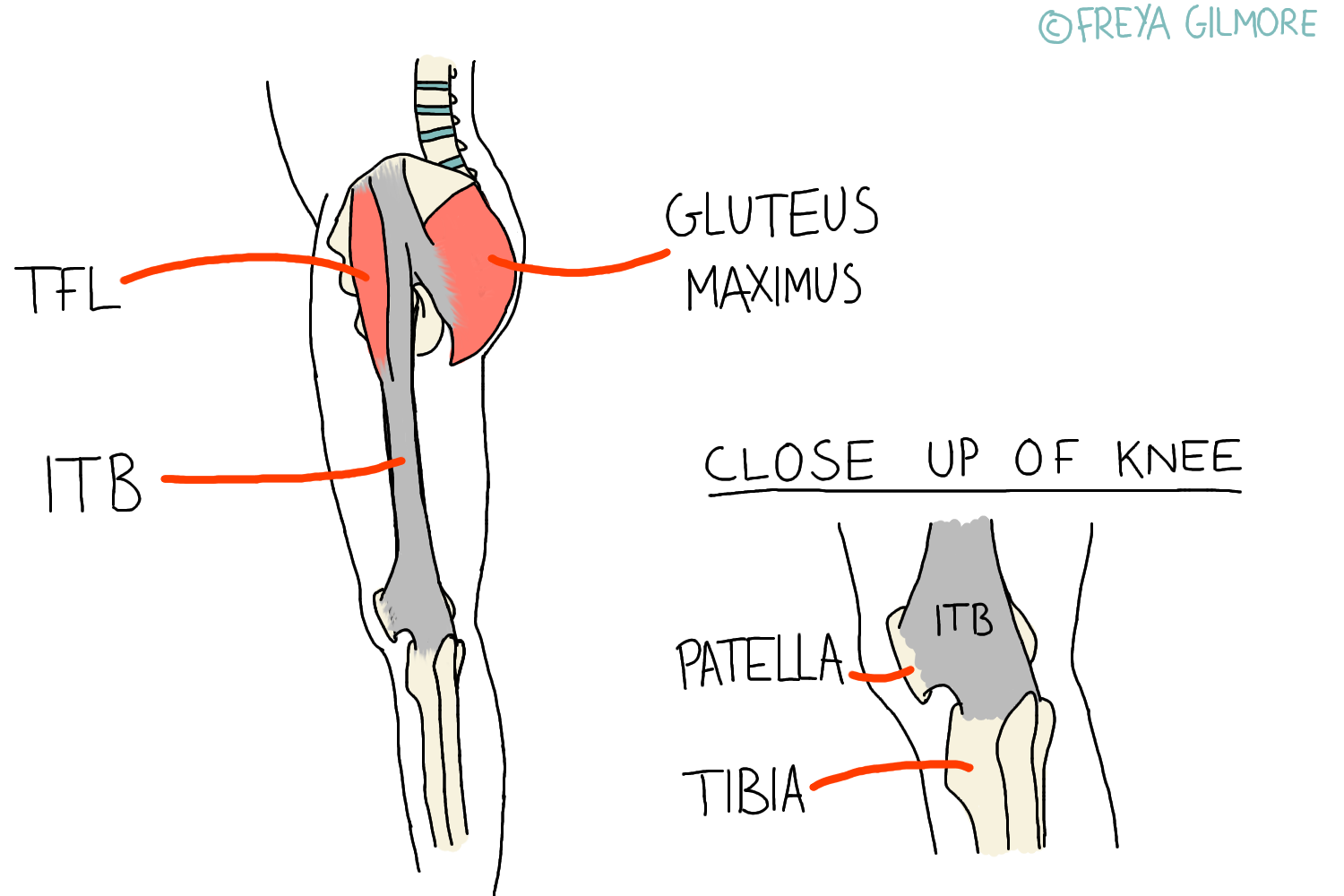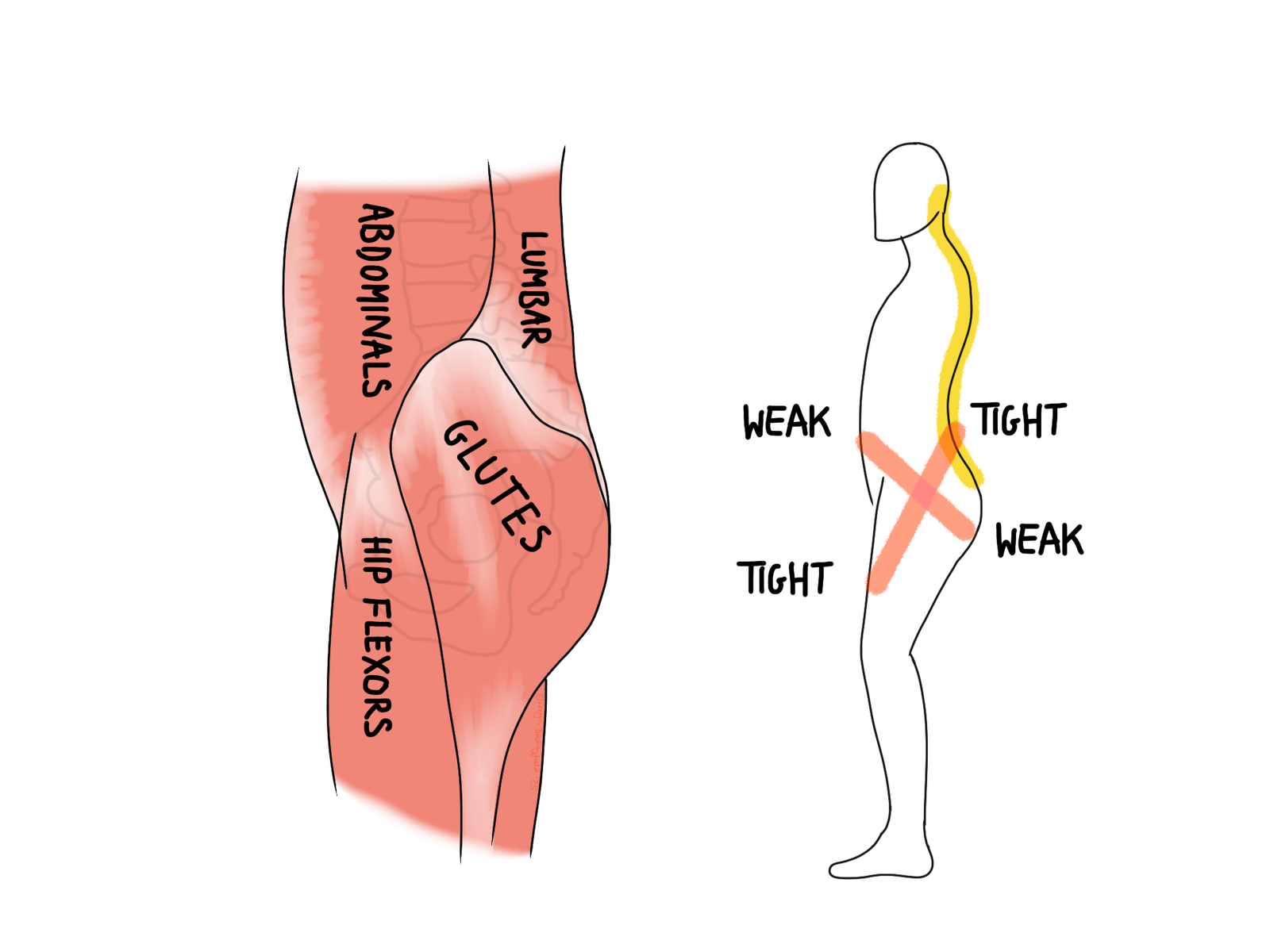The IT band is a band of tissue that runs down the side of the…

Chronic Pain
Chronic pain is defined as any pain that lasts for more than 3 months. But when we use the term “chronic pain”, we’re usually referring to a kind of pain with different characteristics to most, not simply a pain that’s been there for a long time. These features develop when the body and brain begin to process pain differently due to its long duration. These different characteristics are primarily:
- an increased sensitivity to pain
- feeling pain from stimuli that are not normally painful
Not all long term pain will change like this. Chronic conditions like osteoarthritis can cause pain for years, but may remain unchanged. And an injury that leads to chronic pain for one person might not for someone else. Many factors feed into the development of chronic pain, from tissue health- diet, smoking, drinking; to beliefs about the pain and how it will affect your life.
Managing Chronic Pain
Effectively managing chronic pain requires a holistic approach. Pain is somewhat complicated at the best of times, and when it becomes chronic, the body and mind are both heavily involved. That’s not to say that “it’s all in your head”, but that pain is contextual. When a child falls and looks to an adult for their reaction, whether or not they cry is not totally voluntary. If we believe that our pain signals danger, we will feel it more. So someone with neck pain who has been told by a specialist that their neck is “crumbling” is likely to be in much more pain than someone who was told by the same specialist that their neck is strong and stable.
Desensitisation exercises can be very effective. Graded exposure is one of the more simple approaches. This is when you apply a stimulus to the affected area, starting with a low dosage and gradually building up. So if your leg was irritated by bedsheets, you could start brushing the skin lightly with cotton wool to encourage the nervous system to recognise that touch is not a threat. Once the cotton wool is manageable, you could try something more rough or use more pressure. This exercise can be useful for sensitised nerves too, like in some cases of sciatica. Your osteopath can do this with you in clinic, and give you things to continue at home.
Beyond painkillers, other methods of pain relief such as the use of a TENS machine might be helpful. This may not be appropriate for people with certain heart conditions, so speak to your GP or pain specialist beforehand.
When Pain Can’t be Fixed
Sometimes the pain itself cannot be resolved or reduced, which can be a difficult thing to come to terms with. But, because pain is contextual, it can be relatively “reduced” by enriching your life around it. This video from Royal Holloway University explains the idea well. Depending on the details of your problem, you may still find that osteopathy helps to keep your pain levels manageable. This can be especially true if your pain causes you to move your body in a way that compromises another area: thus preventing injuries on top of your existing pain.




